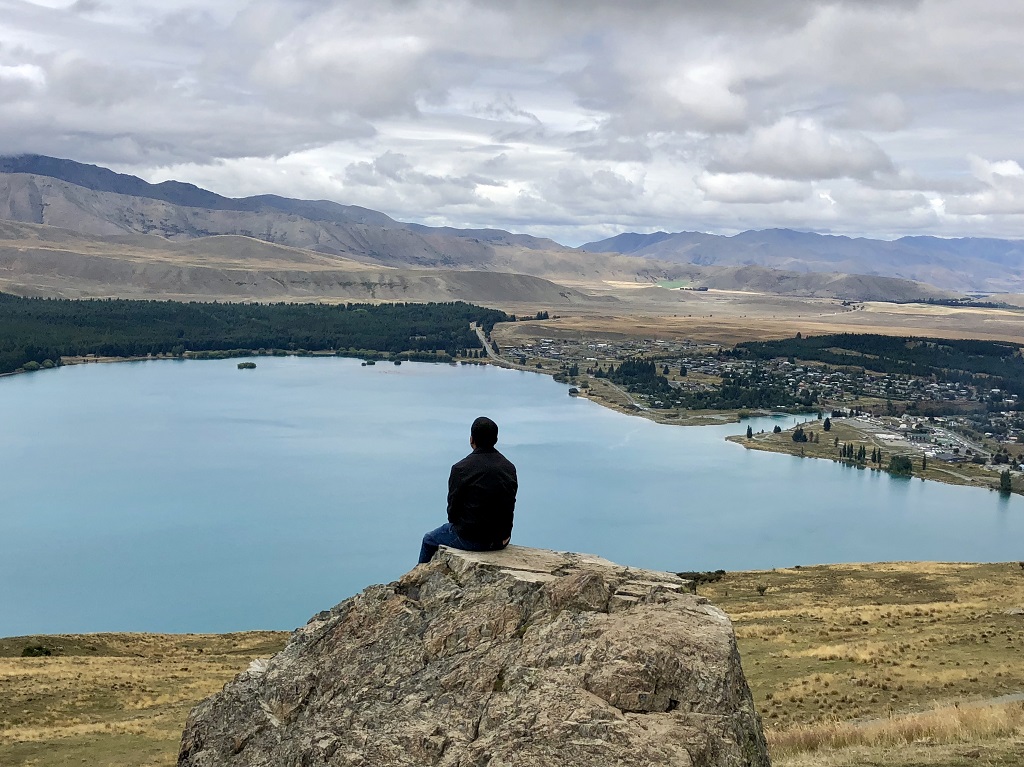How to Practice Silence and Solitude? (Part-1)
Today we will discuss “how to practice silence and solitude?” In the first of this two-part blog series, we highlight different aspects involved in practicing silence and solitude.
One of the most powerful quotes that I have ever come across is from Blaise Pascal, a famous French philosopher, mathematician, scientists and inventor. The quote, “I have discovered that all the unhappiness of [humans] arises from one single fact that they cannot stay quietly in their own chamber,” brings into light the root cause behind why many people live an unfulfilling and unhappy life.
I believe the insights from this centuries-old quote are even more relevant in today’s era where we have this unremitting urge and restlessness to always stay connected with the outer world.
Think about the constant crave that the vast majority of the population has today for digital devices. Most of us live our lives on our digital device’s screen. We check our cell phone for texts and notifications, scroll through social media pages, newsfeed, and email inbox every few minutes as if our soul survival depends on it. I was dumbfounded when I found, today’s population check their phone on an average every 12 minutes.
Beyond cell phones, how often do we find ourselves mindlessly browsing the internet, watching YouTube, flipping through TV channels, media streaming libraries just straight out of boredom? The reality is we keep ourselves occupied almost all the time with external stimuli.
Recent research has revealed “[many] people prefer electric shocks over being alone with their own thoughts.”
As deeply startled as I was with this observation, I also recognized how counter-cultural it is in today’s society to be purposefully quiet and unaccompanied.
While on the surface it may appear our motivation is to keep ourselves engaged however, upon digging underneath we will uncover the reality of avoiding being face-to-face with our very own real self and thoughts.
Unfortunately, not acknowledging and accepting who we truly are, separates us from our true sense of happiness and fulfillment, leading to an utter restless, dissatisfying, exhausting and unhappy life.
As we discussed in our previous blog, embracing the presence and grace of silence and solitude is a very effective way to connect and get comfortable with our deepest thoughts, feelings, emotions, and inner-truth. It’s a path that leads to spiritual awakening and enlightenment.
Of course, knowing the “what” and the “why” is very important however, it’s the application in our day-to-day living is that changes the quality of our overall life.
On a very basic level, practicing silence and solitude is composed of six integral parts, which we have discussed here within.
1. Recognize the gap:
How can one bridge a gap without acknowledging its existence first?
You are right! It’s not possible.
Regardless of the vastness of our external achievements, the truth is many of us are not truly happy and fulfilled. The majority of us are constantly carrying a sense of void and restlessness with us, leading our primary emotions to be negative.
Instead of overlooking this disconnect, today once and for all let’s acknowledge its presence.
2. Know your why:
Although, it might sound a cliche knowing your “why” is the fuel that starts and keeps any transformation engine running.
As I have discussed in my previous blog, it’s impossible to feel the ultimate joy of contentment, spiritual peace and eternal joy without accepting and uniting with our true inner-self.
Resolve today that you want to be truly happy and fulfilled from the inside.
3. Schedule:
Years ago one of my mentors said: “what gets scheduled is what gets done.”
Let’s face it most of us have packed days, filled with usual day-to-day life activities, family commitments, work demands, social interactions and so on. So, if we don’t put aside some time in our calendar to practice silence and solitude, likely, we won’t get to it.
4. Physical environment:
At the beginning, having a proper and supportive environment for practicing silence and solitude is vital.
An ideal environment for this practice offers quietness and seclusion. For example, a small area of your house which is not accessed regularly and is away from digital devices such as television, computer, tablets, cell phone, charging stations and so on. If you have a private office, you can simply close the door for a few minutes every day and turn it into your silence and solitude sanctuary. Being out in nature, whether it’s maybe a park, river-walk, or being out in the woods certainly enhances the effectiveness of this practice.
Once you have picked the quiet space, pick something on which you can sit flat comfortably such your body doesn’t wiggle. After settling in your space, take in your surroundings. This is your personal hermitage, where you will retreat every day to connect with the depth of your inner-being through the medium of silence and solitude.
5. Focus:
Being in silence and solitude, away from external stimuli is not something most of us are accustomed to. It’s perfectly normal for people to feel awkward or think they are doing it wrong or can’t do this. Despite these initial uncomfortable feelings and experiences, let’s persist and concentrate on silence. Embrace and appreciate the fact it will take some time and effort to get attuned to silence and solitude. Similar to any muscle, the more we use the stronger it will get.
During these sessions, you may hear external sounds as you try to focus on silence. Depending on your environment you can hear the wind, tree leaves, birds, someone walking, clock, door, and so on. In the beginning, these may appear to be sources of distraction. With that said, as you steep and settle in silence, they will simply blend with silence. Simply put, as long as we are solely concentrating on silence, we will recognize the existence of these background sound don’t take anything away from the presence and your practice of silence and solitude.
6. Listen and connect:
Being present and mindfully listening is the core of this practice. As your attention digs deeper and deeper into silence and solitude, consequentially the effect of external stimulus will start to disappear and clarity will start to emerge paving the path to look within. A metaphor of this would be a jar of muddy water through which visibility is null however, once left alone to rest the sediments settle at the bottom and we can see through the water.
While it may appear our inner-voice just came alive, the matter of the fact is that it has always been within us. However, until now due to constant outside noises, it has gone unnoticed and unheard.
Some final thoughts:
As we step into the realm of consciousness and higher vibrations, we will experience an elevated level of awareness and start to listen and connect with our inner-self. Our deepest thoughts, emotions, longings, pain, joy will start to appear on the surface. Remember, our inner-self has neither anything to hide nor any image to maintain. It only knows one thing and that is to speak the truth.
It’s very important that we closely listen to it and be entirely open, as it holds the map of the road that we must walk to connect with our very own eternal presence leading to ultimate inner happiness, fulfillment and spiritual peace.
As a word of caution, this process and transition are not instantaneous, instead, it takes some time and sincere effort. Accordingly, let’s not get discouraged at the start instead, persist with the process of concentrating on silence and slowly but surely results will soon follow.
To conclude, I invite you all to join in this ancient, humble, and life-changing quest to discover and connect with your inner-world and long-lost self.
Namaste.



